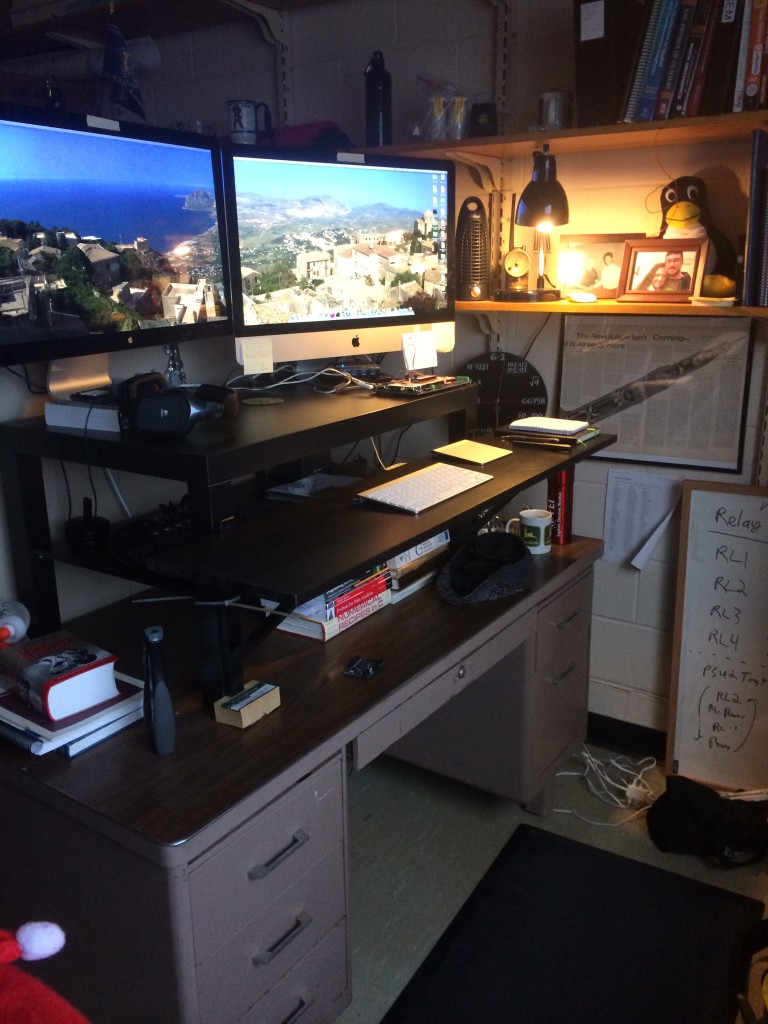I spend a lot of time at work... probably more than is really healthy for me. In an effort to mitigate any harmful effects that working has on my health, I decided to try the standing desk idea. We've all heard about how sitting all day is very detrimental to your health (example). Recently our department has been renovating offices and giving people the option of a small motorized adjustable height desk. I was very excited about his until I found out that my office was not going to be renovated. I looked at the standing desks that professors had purchased, such as the Geek Desk, but realized that those commercials desks are out of the graduate student budget. I also had never used a standing desk before.... what if it didn't work for me?
After reading lots of articles online, I decided to build something like a standing desk on-top of my existing desk. Following the advice over at "Only a Model", I made the IKEA pilgrimage and bought the required parts (a coffee table, a shelf, and two brackets). I got back, cleaned off my desk, assembled the parts, and had my very own standing desk! It was slightly shaky under the weight of two 27" monitors, but overall useable. I thought my health problems had been successfully avoided.
I noticed that my feet began to get sore, walking down the hall at the end of the day was painful. Reading more, it appeared that I needed a foot pad. I bought the best that I could find, in fact it cost more than all of my standing desk parts! The mat was incredibly comfortable and thick enough that I could take my shoes off and dig my toes in. It still didn't solve the problem though. I continued standing for weeks, brought in a stool to sit a few hours a day, but no gain. Standing felt great, but not for 10-12 hours a day.
I noticed that doing tasks such as filling out paperwork that required focus, but not creativity were helped. I wanted to get it done! Tasks like writing and coding suffered. Not being able to lean back and think of the right words or the correct function call slowed me down. Reading and absorbing papers was also difficult. At the end of the day, it just wasn't working (another example).
Maybe if I only worked 8 hours a day, 5 days a week, things would have gone differently. An adjustable height desk may have helped as well, but I doubt that I would take the time to change configurations more than once a day. I ended up back at my sitting configuration with a new coffee table at home.
There are other options out there. Several people in the department have recently purchased a FitDesk. These cycle desks look good for computer tasks, but are not intended to replace a full desk with their small surface area. Probably the best option is to have multiple work spaces. One standing position, one sitting position, and possibly something else as well. That's possible if you have a larger office/cube, but a small office with 6 graduate students just doesn't have the room.
So what do I do? I've been trying to be better about getting up every hour or so and taking a short walk/refocusing my eyes at a long distance. Maybe something like a foot roller would help as well. What is your workspace setup like? Remember to make sure it is ergonomic!




